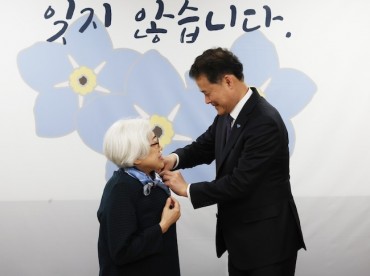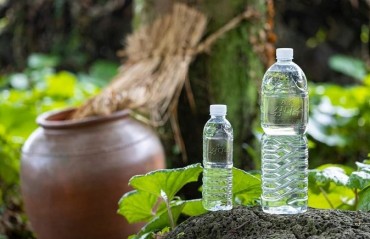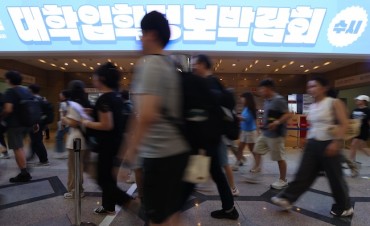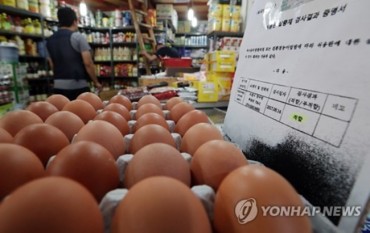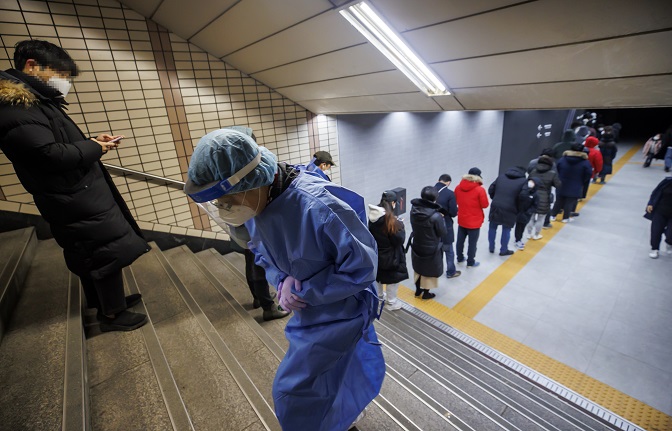
A medical worker climbs the stairs in front of a crowded COVID-19 testing station in Seoul’s eastern district of Songpa on Dec. 17, 2021. Seoul’s morning low on this day recorded minus 5 C. (Yonhap)
SEOUL, Dec. 17 (Korea Bizwire) — South Korea’s new coronavirus cases stayed above 7,000 for the third consecutive day Friday, with the country set to restore tight social distancing and other virus curbs to contain the fast spread of the virus.
The country added 7,435 more COVID-19 cases, including 7,400 local infections, bringing the cumulative total to 551,551, the Korea Disease Control and Prevention Agency (KDCA) said.
Friday’s tally is down from the previous day’s 7,622 and the record high of 7,850 reported Wednesday, but it is still a big jump from the daily counts that hovered in the 5,000-6,000 range earlier in the week.
The KDCA said three more omicron variant cases were reported, putting the total at 151.
The number of critically ill patients came to 971, down from the all-time high of 989 reported Thursday.
Deaths from the virus came to 73, the third-highest number since the pandemic, putting the total at 4,591. The fatality rate stood at 0.83 percent.
Health authorities and local governments had reported 6,341 new cases as of 9 p.m., up 440 from the same time the previous day and up 1,186 from the comparable time a week earlier.
Daily cases are counted until midnight and announced the following morning.
A set of revised virus restrictions will take effect nationwide starting Saturday through Jan. 2 to stem the spread of the virus.
It marks a reversal of the government’s “living with COVID-19″ scheme that began last month with an aim to regain normalcy by relaxing virus restrictions in phased steps. Some antivirus rules have already been strengthened since December.
Under the updated measures, the maximum size of private gatherings will be limited to four people nationwide, from the current limit of six in the capital area and eight elsewhere, and a 9 p.m. or 10 p.m. curfew will be applied to business establishments, depending on their type of service.
Fully vaccinated people will be allowed to use restaurants and cafes, and those who have not been vaccinated can only use the facilities alone or request takeout or delivery.
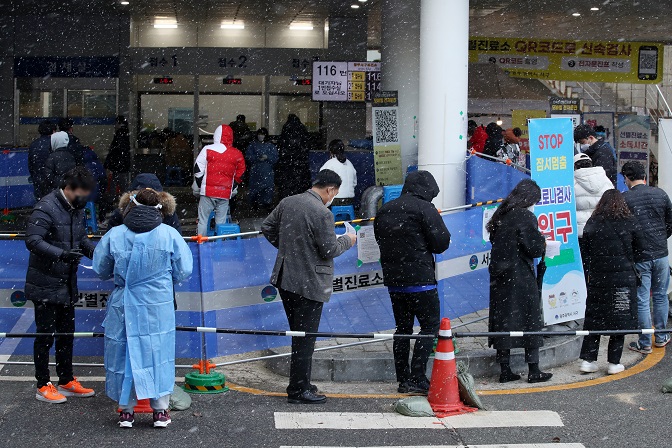
People wait to get tested for COVID-19 at a testing station in a snowy Gwangju, 329 kilometers southwest of Seoul, on Dec. 17, 2021. (Yonhap)
Prime Minister Kim Boo-kyum said Friday the government has mobilized all possible resources to provide additional financial support to small businesses and self-employed people that will be affected by the new virus curbs.
The government will provide 1 million won (US$840) each to 3.2 million small businesses and merchants, beginning this month in the latest subsidy for sales losses.
The subsidy is part of a 4.3 trillion-won package to support businesses hit hard by the pandemic.
Schools in the greater Seoul area will resume remote learning and run at about two-thirds or 75 percent capacity from next Monday, except for elementary school first and second years.
The extent to which masks can be worn and whether there is eating inside determine the degree of restriction. Up to 300 people can gather for outdoor sports events and other festivals approved by government agencies.
Religious facilities will be able to have a maximum of 70 percent attendance if the participants are fully vaccinated, and 30 percent, or up to 299, if they are not vaccinated.
The “travel bubble” agreements on mutual quarantine exemptions with Singapore and Saipan will remain in place.
But people arriving in South Korea from those countries will be required to hand in negative COVID-19 results conducted within 48 hours before the departure, starting Monday, as opposed to the current 72-hour validity.
Health officials said they were trying to do their best to secure more hospital beds for critically ill patients. As of 5 p.m. Thursday, the operation rate of intensive care units came to 81.9 percent, way above the 75 percent threshold, considered the saturation point.
More than 38,000 COVID-19 patients are currently undergoing at-home treatment.
Of the locally transmitted cases, Seoul reported 2,837 infections and Gyeonggi Province that surrounds the capital logged 2,147 cases.
Thirty-five cases came from overseas, raising the caseload to 16,236, the KDCA said.
As of Friday, 84.3 percent of the country’s 52 million population had received their first shots of COVID-19 vaccines, and 81.7 percent had been fully vaccinated. About 19.5 percent of the total population has gotten their booster shots, the KDCA said.
(Yonhap)



